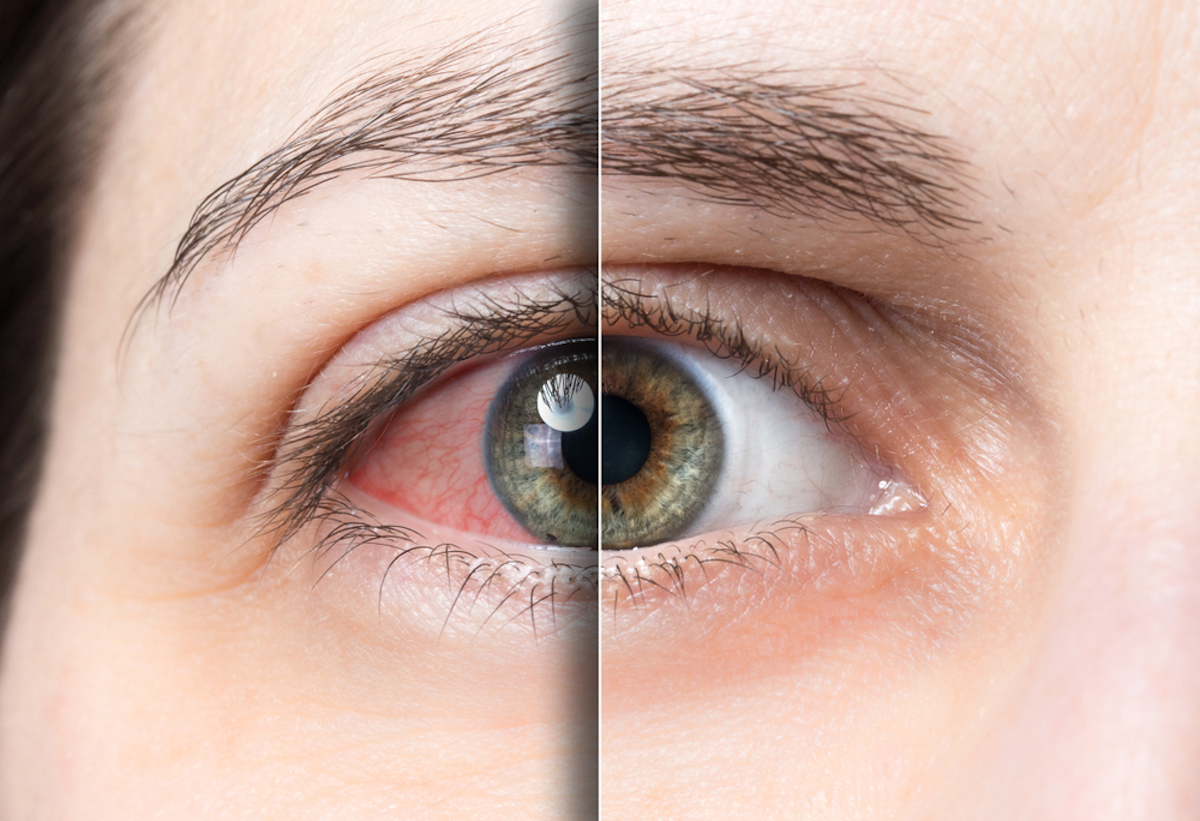Pink eye: it sounds pretty and cute, but in reality, it is a quite serious – and sometimes contagious – eye condition, in which inflammation or infection affects the transparent membrane – the conjunctiva – that surrounds your eyeball and inner parts of the eyelids. This causes the affected eyeball to turn red or pink, hence the name. What causes conjunctivitis – the official medical term for the eye condition? Is it really contagious? When and for who is it contagious? How can I recognize it? And what are possible treatment options? These are questions that you really should know the answer to, as this eye condition is really no fun, and you don’t want to infect others with pink eye, am I right?

Types of Pink Eye
In general, children often suffer from conjunctivitis because it can be incredibly contagious, and schools or daycares are perfect places to spread rapidly. After all, children don’t keep much, if any, distance from each other, so pink eye – and other virally contagious diseases – are easily transmitted. Of course, this does not mean that adults are not affected, or that the eye condition is always contagious. There are different types of pink eye:
- Viral strains; most common – and contagious – form. Starts often in one eye and after a few days, the other eye is affected too.
- Bacterial strains; affects mostly one eye and involve a lot of pus and mucus
- Allergic types; a reaction to something your body can’t tolerate
- Ophthalmia neonatorum; a severe form of conjunctivitis that affects newborns. Make sure to get treatment asap.
- Giant papillary conjunctivitis; reaction to long-term use of contacts or an artificial eye.
Causes of Pink Eye
Causes of conjunctivitis can differ quite a bit depending on the type you’re suffering from. Viruses are the most common cause. There are several viruses that can cause pink eye, the most well-known are the common cold and COVID-19. Bacterial conjunctivitis is another common form and is caused by, you’d probably guessed it, bacteria. Bacteria that cause this are Staphylococcus aureus, Haemophilus influenzae, Streptococcus pneumonia, and Pseudomonas aeruginosa. Other reasons for conjunctivitis are:
- Allergens, like pollen and molds
- Irritating substances, like shampoos, contact lenses, eye makeup, and pool chlorine
- STDs, like gonorrhea and chlamydia
- Foreign object in the eye
- Autoimmune diseases
- Blocked or incompletely opened tears ducts; only for newborns
Conjunctivitis is the most common eye condition in kids and adults in the United States. About 6 million people suffer from it each year. Don’t worry, it is very unlikely to damage your vision. It isn’t a very serious condition – only highly contagious,- especially when you seek treatment and listen to your professional healthcare provider once you have determined that it is pink eye. How do you recognize conjunctivitis?
Symptoms of Pink Eye
In addition to the eye turning red or pink, there are several warning signs of conjunctivitis. Of course, some are more common than others, but it’s important to recognize them. This way you can handle fast and start possible treatment as soon as possible. This will prevent the condition from spreading much further and relief the symptoms quickly, as some of them can be really annoying. Conjunctivitis is already contagious before symptoms are showing and will last for as long you have symptoms or 24-48h after starting treatment.

Symptoms of conjunctivitis include:
- Redness in the eye(s) or inner part of the eyelid(s)
- (Constantly) tearing
- Yellow discharge that crusts over your eyelashes
- Green or white discharge from the eye(s)
- Gritty feeling in the eye(s)
- Itchy eye(s)
- Burning eye(s)
- Blurred vision
- Oversensitive to light
- Swollen eyelids
Treatment Options
The symptoms of pink eye are partially similar to stye. The biggest difference is that in stye, a large and painful bump forms on or in the eyelid. With pink eye this is not the case and this way you can tell if you are suffering from stye or conjunctivitis. Whether you have pink eye or another eye condition, it’s important to contact your professional healthcare provider, like an ophthalmologist or pediatrician, who can examine the symptoms and diagnose what kind of condition you’re suffering from.
Once the diagnosis is made, your doctor can set up a treatment plan. Possible treatments prescribed by a physician include antibiotics in the form of pills, eye drops or ointments. Of course, there are other ways to treat pink eye. Always do your own research for treatments and choose one that suits you – and your physician. To help you on your way, start your online research here:

